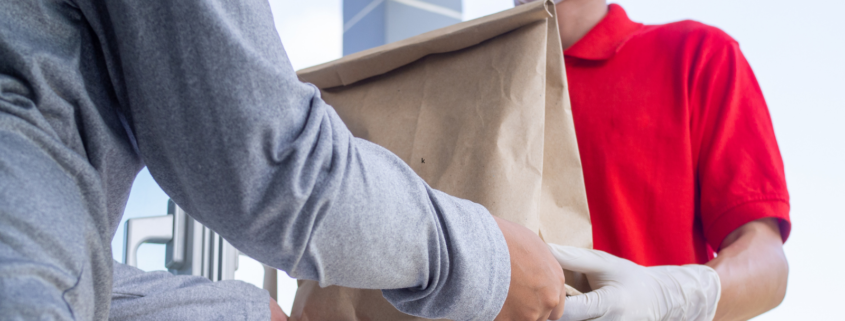4 Ways Customers Don’t Want To Go Back To Pre-Covid Customer Experience
‘After a year of nearly everything in life being upended, there may be a light at the end of the tunnel. Covid numbers are trending down across much of the United States as vaccinations increase and many places start to re-open. But as Covid potentially nears its end, consumers and companies are faced with a new question: Now what for customer experience?’ BARE shares an article by Blake Morgan for Forbes with post-Covid customer experience.
‘For as disruptive and challenging as the pandemic has been, many consumers aren’t eager for things to return to how they were before. Customer expectations have changed, and brands need to realize and adjust to the new CX norm as they move forward. Customers are eager to get back to real life, but that doesn’t mean they want the exact experiences they had pre-Covid.
Here are four ways brands need to adapt to deliver great post-Covid customer experiences:
1.Virtual Services
Before Covid, no one would have ever considered having a virtual happy hour, attending a virtual fitness class or joining a virtual school group. But things have changed, and many aspects of our lives moved online in the past year. Consumers have come to realize the convenience that comes from virtual services, especially being able to do things on their schedules and from their own homes.
At-home fitness offerings have been huge during Covid. Peloton, which was once considered by many to be too expensive, has become a must-have product for a quality at-home workout, so much that the stock quadrupled in 2020. Even after gyms and fitness centers re-open, many people will choose to stay at home and connect with virtual classes.
Similarly, telehealth has seen a huge boost during the pandemic, especially mental health services. Going forward, 46% of patients say they would choose to receive mental health appointments virtually, largely because of the convenience and confidentiality.
Nearly every company can offer some sort of virtual service if they have a creative mindset. Just because not everything has to be virtual doesn’t mean that customers don’t want some things to stay virtual. Providing customers the option for virtual services and solutions adds a layer of convenience to the experience that customers will want long after the pandemic is over.
2.Pickup and Delivery
Before Covid, the only stores where customers could pick up their orders curbside were grocery stores—and even that wasn’t particularly widespread. But as stores were forced to shut down or limit their capacity, nearly every type of store added the option for pickup or delivery. Many stores were forced to build out systems in just days at the beginning of the pandemic, but most have now had a year to finetune their systems for quick and efficient pickups.
Customers love the convenience of pickup and delivery and want it to continue long after the pandemic ends. No matter if it’s a craft store, sporting goods retailer or restaurant, customers love the convenience of being able to order items online or through the app and have them delivered or ready for pickup within hours.
Stores like Bed Bath & Beyond and Dick’s Sporting Goods added robust pickup and delivery options. Bed Bath & Beyond’s move allowed the company to see comparable growth to its pre-Covid sales, largely because of digital sales. Dick’s Sporting Goods experienced record-setting growth in 2020 with its expanded pickup and delivery options and a heightened demand for fitness and outdoor equipment.
Pickup and delivery greatly bolster the customer experience by prioritizing convenience and giving brands a chance to offer personalized service. In a post-Covid world, expect to see pickup and delivery become a permanent part of the retail landscape.
3.Personalization
Personalization has been on the rise for years, but especially during the pandemic. Customers aren’t often interacting with brands in person, which has increased the need for a more personal touch. But with more sales and interactions happening online, brands have access to more customer data than ever before, making it easier to offer hyper-personalized experiences.
One strong example of personalization is Hulu, which combines AI algorithms with human connection to provide personalized show and movie recommendations for each customer. Users have the option to like or dislike a recommendation, which adds to the personalization. Hulu’s goal is to curate a list of relevant content, not just to give each person a list of shows. Every aspect of the experience, even down to the order shows are displayed, is based on data and personalized for each user.
Customers will crave personalization even more so after Covid. They want to be seen as individuals and receive unique service and recommendations. Brands need to prioritize personalization efforts and truly get to know their customers. The most successful brands use real-time data to adjust the experience to a customer’s exact needs.
4.Health and Safety
Practices that were once common, like using makeup samples, eating at buffets and even shaking hands, have largely ended during the pandemic, and most won’t make a comeback.
Even after they are vaccinated and the virus has subsided, customers will still be concerned about health and safety, especially the cleanliness of the stores and businesses they visit. The pandemic changed how consumers view cleanliness and made it a priority for where customers choose to shop.
Costco, Trader Joe’s and Whole Foods are the top grocery stores for Covid safety, according to a nationwide series of mystery shops. These stores excel by consistently following health and cleanliness guidelines at numerous stores, something that is important to customers. The same study found that 62% of consumers would stop shopping at a store that doesn’t take health and cleanliness seriously.
Going forward, companies need to maintain their health and safety efforts and communicate them to customers. Consumers won’t be afraid to change businesses if they feel a store is unclean and share that message with friends and family.
Covid may be starting to fade, but the long-term effects will be with us forever. What customers want and expect has changed, and in many cases, they don’t want to go back to how things were. Brands need to adjust to new CX expectations to deliver timely and high-quality experiences.’
Read the original article in full here.
For more information on how we can help you set up a mystery shopping program, send us a note here. We, at BARE, believe in the ‘why’ behind the reasons, and we will provide actionable insights to help you provide the best experience for your customers.
Disclaimer of endorsement: Any reference obtained from this article to a specific business, product, process, or service does not constitute or imply an endorsement by BARE International of the business, product, process, or service, or its producer or provider.









